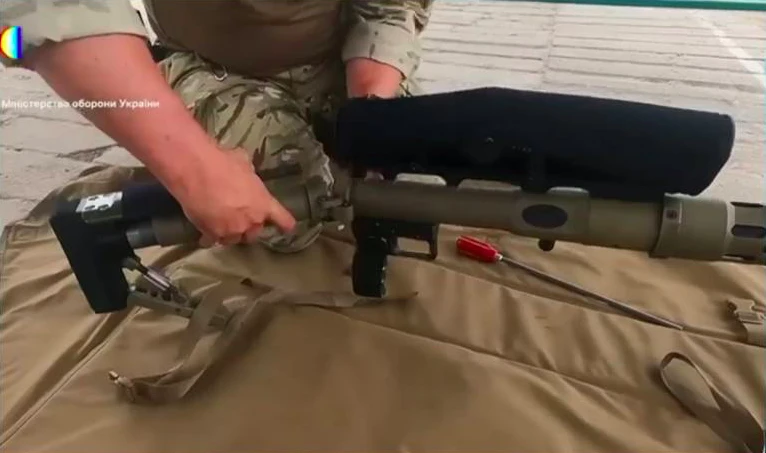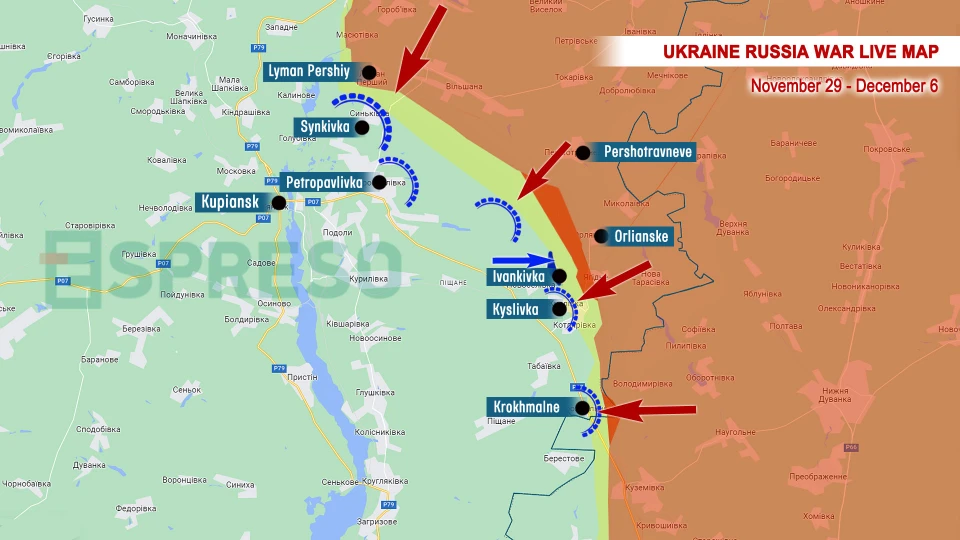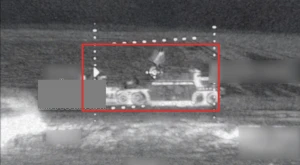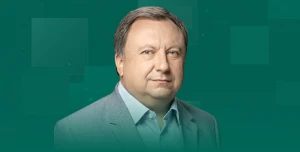
On Ukrainian sniper's world record and drone production challenges. Column by Serhiy Zgurets
On December 5th, The Wall Street Journal featured an article discussing Ukrainian sniper Vyacheslav Kovalskyi's remarkable achievement. He recently set a world record for the longest sniper shot in combat, taking down an enemy from a distance of nearly 4 km, specifically 3800 meters
Ukrainian sniper sets world record
On December 5, The Wall Street Journal featured a story on Ukrainian sniper Vyacheslav Kovalskyi, who, at 58 years old, achieved a remarkable feat. The article highlighted a photo of Ukrainian soldiers with their rifles. Kovalskyi, part of the SBU military counterintelligence unit, set a new world record for a sniper shot in combat conditions, taking down an enemy from an impressive distance of almost 4 km, precisely 3800 meters.
The record-setting shot was made using the Ukrainian Volodar Obriyu rifle, developed by a company of the same name. This rifle employs special 12.7 mm caliber ammunition, normally effective up to 2.5 thousand meters, but Kovalskyi demonstrated its exceptional range at 3800 meters.

Designed as an anti-material weapon, the rifle serves to target critical enemy assets, capable of penetrating the side of an armored personnel carrier, destroying a tank's optics, and neutralizing ATGMs and other enemy objects. Notably, this rifle is in use across various front-line areas.
I recently spoke with the weapon's designer, who said he would share more details post-war. Until then, the battlefield remains the primary storyteller.
Frontline update
On the frontline, our Armed Forces, including snipers, tank crews, gunners, and scouts, are effectively holding back the enemy in various directions such as Kupyansk, Lyman, Avdiivka, and Marinka. The ongoing conflict in Avdiivka and Marinka also highlights the challenging situation in Kupyansk, a key area where the enemy seeks advancement towards Kupyansk-Vuzlovyi. This location serves as a crucial hub with a railway and a significant road. The enemy's focus is on attacking Kupyansk, commencing from Synkivka. The struggle for Synkivka, situated approximately 9 km from Kupyansk and Kupyansk-Vuzlovyi, has persisted for several weeks.

Synkivka, situated in a lowland, became a target for the enemy's advance. Although our forces successfully repelled the initial incursion, the enemy is regrouping in Synkivka, attempting further offensive actions.
Denys Yaroslavskyi, commander of the Armed Forces unit, reported an escalation in enemy assault attempts. Invaders consistently launch assaults in groups ranging from 10 to 30 fighters. The situation along the highway is precarious, with the enemy amassing forces to attempt a breach of the Armed Forces' positions.
The Armed Forces unit commander mentioned that weather conditions are making things difficult. In freezing trenches, soldiers need a break every 3-4 hours to avoid frostbite. This impacts both our troops and the enemy, as everyone faces the same harsh temperatures, creating significant challenges.
Denys Yaroslavskyi shared his thoughts on mobilization and demobilization. He highlighted that in almost a month, it'll be New Year's, marking the second year that many soldiers spend at the front, away from their families. Demobilization is a crucial issue; everyone at the front understands the need for soldiers to be replaced. Currently, discussions are ongoing about demobilization, debating whether it should be 24 or 36 months from the time a soldier joins the Armed Forces. However, serving for 36 months could make it challenging for soldiers to return home in good health. Three years of intense fighting is tough. Yaroslavskyi believes that 24 months is more reasonable, allowing most fighters to recover for at least six months or more.
The military stated that when replacing soldiers on the front line, priority should be given to security officers skilled in handling weapons, particularly those aged 35-40 who retired from the SBU and National Police. Many personnel from the National Police, Security Service of Ukraine, and Border Service retire around 35-40, often with a fitness certificate. Before the war, this was widespread. A second check could find that 80% are still fit for service. These individuals should be a focus for mobilization, along with civil servants. Around 30% of civil servants are non-contributory. Although plans are in place to mobilize 20-30%, it's deemed insufficient. Mobilization should commence with ex-military and military personnel. Relying on an increased number of call-up papers for the conscripts is seen as a dead-end solution.
Challenges in scaling Ukrainian drone production
Now, let's delve into the world of drones, their production, especially FPV drones, and the challenges faced in scaling up this crucial asset for our Defense Forces. The Ministry of Defense plans to allocate UAH 40 billion next year for drone procurement, which translates to $1 billion for acquiring FPV drones, reconnaissance drones, and other reconnaissance tools. Beyond the budget, it's crucial to ensure that the produced drones align with our priorities. The new Deputy Minister of Defense for Armaments highlighted that the Armed Forces currently utilize around 70 UAV modifications, comprising 20 different combat units. According to the Deputy Minister, the monthly supply of drones to the Armed Forces is on the rise.
On the flip side, there's a stark reality as our manufacturers indicate that the entire Ukrainian industry, particularly the private sector, manufactures approximately 50 thousand FPV drones each month. This figure falls significantly short of our adversary's production capacity, indicating a pressing need to boost our drone production. However, certain challenges exist in accomplishing this.
In a chat with Valery Borovyk, the head of the New Energy of Ukraine Alliance and the commander of the Bilyi Orel special unit for strike drones, we delved into why the Special Forces can't buy his drones. It turns out that Special Communications, in partnership with the Ministry of Digital Transformation, runs the "Army of Drones" initiative. The money collected by the Ministry of Digital Transformation, whether through United 24 or other channels, goes to the State Special Communications, which is crucial for procuring drones for various purposes. Essentially, FPV drones are bought through Special Communications, with components sourced from China. This substantially influences the pricing of these drones.
The "New Energy of Ukraine" alliance is working on its own drones and aims to boost Ukrainian-made equipment. Consequently, the cost of a Ukrainian drone, built from local components, is notably higher compared to those assembled with Chinese parts.
Valery Borovyk highlighted that the alliance produces versatile copter-type drones crafted for various purposes. They manufacture their own motors, frames, and controllers, with plans underway to acquire a chip production line. The goal is to develop a military-grade Mavic tailored for wartime needs, distinct from civilian applications. Presently, Ukraine faces a challenge as Russia heavily invests in Chinese equipment, placing Ukraine at a disadvantage. China, indifferent to the buyer's identity, might prioritize political decisions over selling to Ukraine for military purposes. Thus, it's crucial to focus efforts on supporting local manufacturers producing Ukrainian equipment and drones.
- News














































